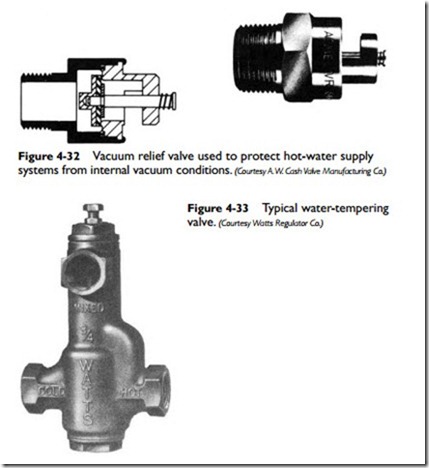Vacuum Relief Valve
A vacuum relief valve is used to protect a hot-water supply system by preventing vacuum conditions that could drain the system by siphonage, burn out the water heater, or cause the storage tank to collapse (see Figure 4-32).
The vacuum relief valve is installed in the cold-water supply line. It closes tightly under system pressure and opens quickly in case of emergency at less than 1⁄2-inch vacuum. When the valve opens, atmo- sphere is admitted and breaks the vacuum, preventing siphonage of the system and the possible collapse of the storage tank.
Water-Tempering Valves
A water-tempering valve (see Figure 4-33) is used in a hot-water supply system to provide domestic hot water at temperatures
considerably lower than those of the water in the supply mains. These valves are especially recommended for larger hot-water sup- ply systems requiring dependable control of the water temperature at the fixture outlets.
A water-tempering valve is not designed to compensate for sys- tem-pressure fluctuations and should never be used where more sophisticated pressure-equalized temperature controls are required to provide antiscald performance. Water-tempering valves are described in greater detail in Chapter 10 of Volume 2 (“Steam and Hydronic Line Controls”).
